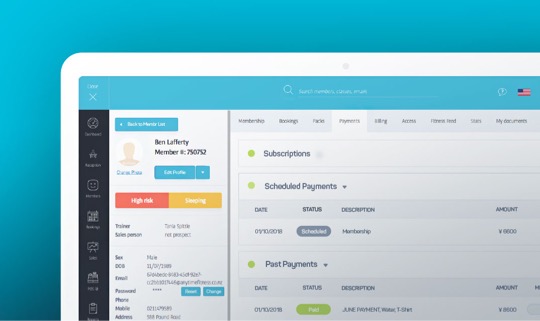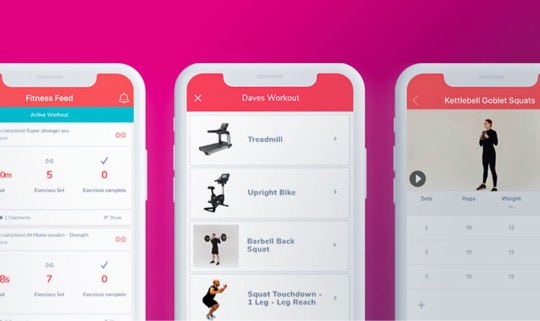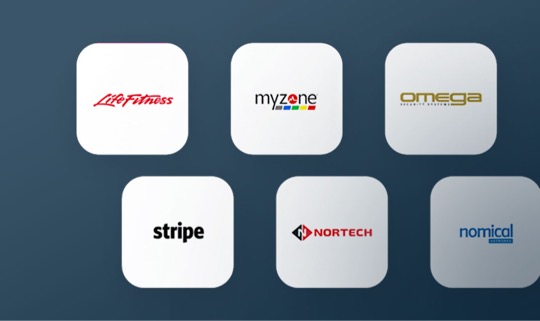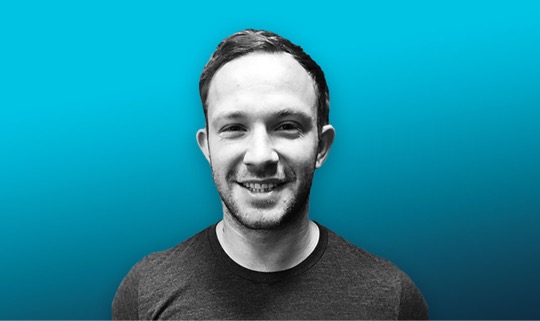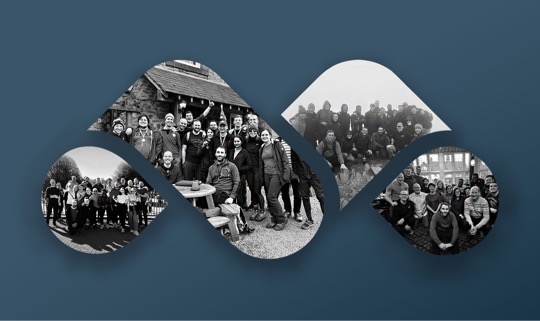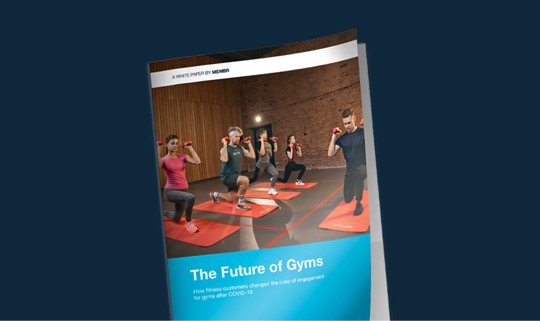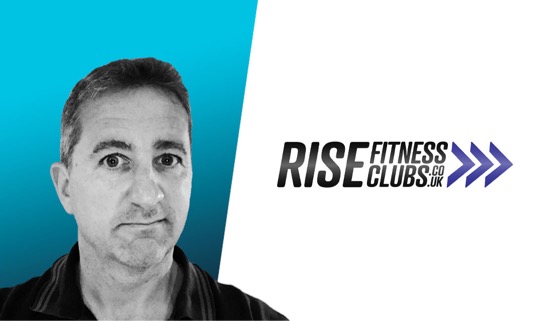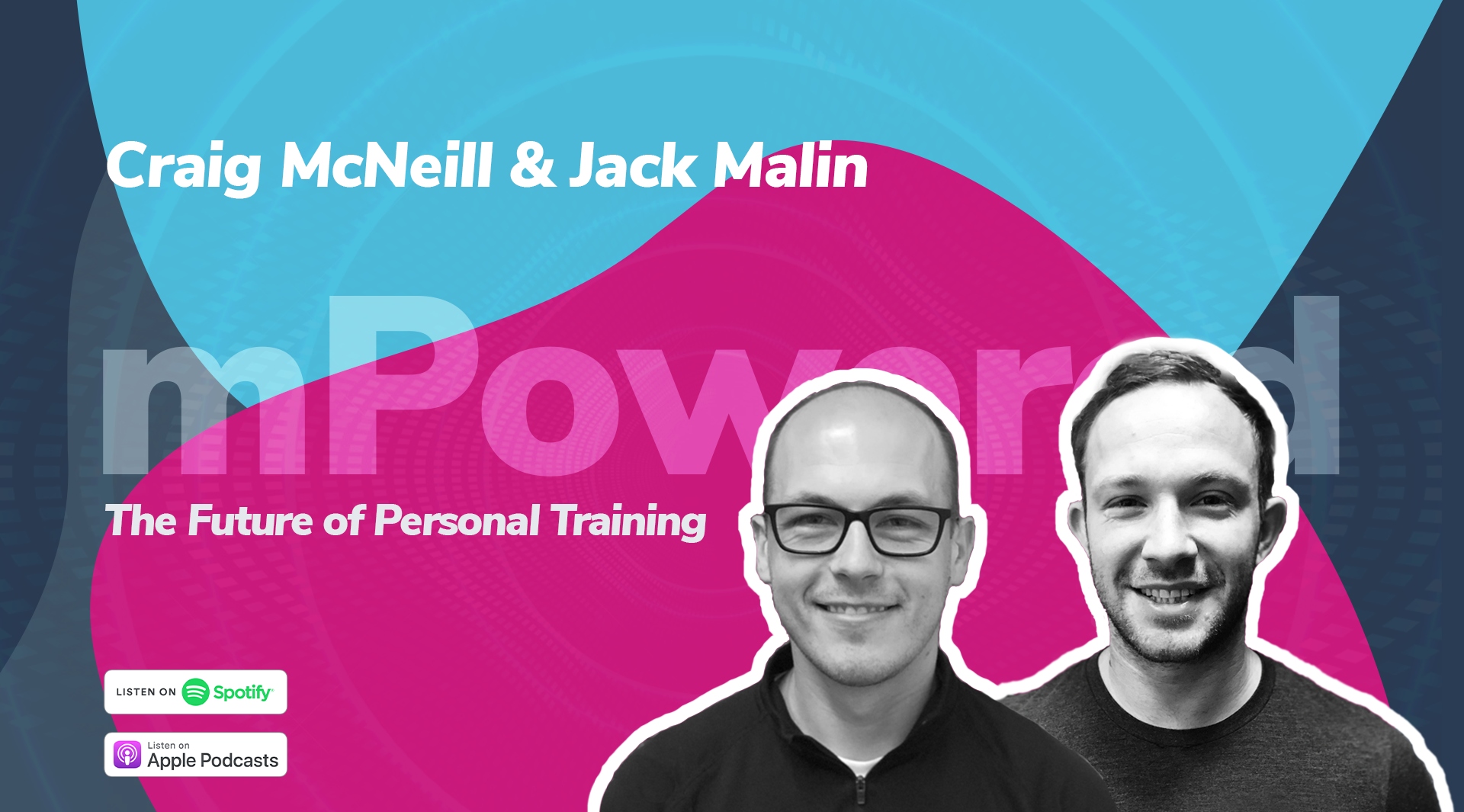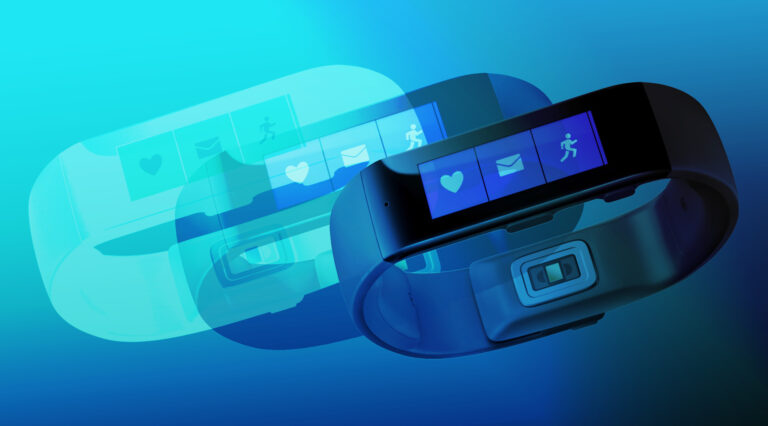Craig McNeill: [00:00:00] Welcome to mPowered and we’re here for a quick recap from an awesome series and we’ve had some amazing guests. Jack has been our co-host through the series, how’ve you found the series, Jack?
Jack Malin: [00:00:16] Mate it’s been good fun – being made redundant today. So yeah, hope there’s no tears!
Craig McNeill: [00:00:22] I shed some tears mate so I think I’m dry. So hopefully I won’t get, I won’t choked!
We want to kind of have a, have a recap. And we started with a, with an intro episode, Jack, and then we brought our guests in, who are the experts from all different walks of PT. And I say, walk of life, but I thought
(indistinct)
Jack Malin: [00:00:43] Walks of PT sort of works doesn’t it?
Craig McNeill: [00:00:45] Yeah. So we had people from education, we had PT management outsourcing legends.
Then we had PT management legends from in-house. And then we’ve got operator experience. And we also had a nice guest from the US of A. So we, we, we spoke about on the, on the first episode about what the future of PT looks like, and whether that’s self-employed PT, whether that’s employed PT and whether those, those two different streams are broken or they fix things. Jack, before we dive in and we’re gonna listen to some key takeaways in this, in this recap session from our guests, just before we do that, what would be your kind of thoughts on summary of how we felt in the first episode where we were saying self-employed PT seems to be broken and there’s a, there’s a gap in, in what we’re offering from a personal training standpoint?
Jack Malin: [00:01:43] I still believe that, in that specific statement that, that it’s that, on the whole it’s not in a great place and, and it needs to change.
I think the really refreshing thing is that there are people out there changing it. And I think if you, if you look at Ant and Nick and James and Aaron have done from a self-employed perspective obviously one being in house, one being a management company, but ultimately running self-employed PT models, they are making massive massive changes to how, how self-employed PT can, can be run. I still think that they’re probably on the same page as us though. If you go, nine out of ten gyms that you go to, this is not being ran well, and they always reference the other companies and the other gyms. So it’s, it’s clearly a problem that is in the industry, but it was particularly refreshing to hear that there’s big organizations making big changes to how it is running.
And then I think the, so listening to Mike listening to listen. Well, that’s primarily listening to Mike from an employed perspective, really kind of reinforce what I think about self-employed PT and Mike having a fantastic exit on a business with 21 gyms doing it, it’s more reinforcement for that, but it’s a huge undertaking.
So I think, I think the big takeaway is it’s not necessarily right and wrong answer to how you run PT. And I think probably coming into the series, I thought there was, I was wholeheartedly had my badge pinned to, to, it’s all about employed but it is a big undertaking. You’ve got to be ready for that big undertaking.
And there’s, there’s people doing self-employed PT out there pretty well. And then without having a boring accounting lesson, kind of going into detail about the, the IR35 with Aaron and James. I think that again, it just really, it not reinforce actually, that’s not right. It, it showed me that. We learned that the way that, that I R 35 doesn’t kill off PT, it, self-employed PT, but it does probably make the gap between what you get from self-employed PT and what you get from employee PT, even greater.
If you see the benefits of employed being the control you have the control over the training and the control of the experience control over the customer journey. You wholeheartedly lose that with IR35. Yeah. But not, but not that, that doesn’t necessarily mean you can’t still want to pick good PT model. The two things are just very, very different. A long way around answering your question, but yeah, I don’t think it’s dead.
I think it just is it’s changing. It’s changed at a meteoric rate. That many things have in the last 12 months haven’t they?
Craig McNeill: [00:04:03] 100%. Cool. So what I want to do now is just er, we’re going to have small clips from each episode, so I’m going to do a very small intro. And obviously our listeners can go back to that particular episode and obviously have a deep dive if you haven’t already.
And w we thought this was a really good way to kind of just give you an insight of each episode in a very short way. So we’re talking to Paul Swainson and the clip we’re going to kind of reintroduce now is, is where he was talking about the shift from face-to-face to remote exercising and how to use technology for adding more value.
And this was a really good clip for us to understand that technology isn’t our enemy in this it’s something that we’ve got another tool in our toolbox, which is amazing is let’s make our tool box bigger. It’s another tool in our toolbox to make us provide results to our members, our clients.
Paul Swainson: [00:05:00] There was already a shift towards online provision and an online coaching online training.
The pandemic has just accelerated that because it’s become a, it’s become a necessity. So, whereas I think up until a couple of years ago, lots of trainers probably saw it. Saw digital almost as, as a, as a threat, because if there’s somebody offering something online to the whole world at very low cost, then how can I then compete with that?
When I want to try and offer something in person or at a higher price point. And there’s, you know, there’s a huge, there’s a huge provision out there now. And I think it’s quite, it’s quite interesting that that perception of, of the, of the threat. So to Joe Wicks is a classic example. There was, there was enormous outcry amongst the section of the PT world must last March, April, right?
How can Joe wicks deliver all these sessions for free on a daily basis? I’m going to lose loads of clients. And I remember thinking, well, you’ve got your, you’ve got your priorities wrong there, people aren’t paying, paying you to just watch you do a lot of burpees. If that’s what you think, then you need to kind of have a bit of a shift of a business model.
So I think it was a wake-up call to make people realize that they need to really consider how they offer value to their customers and their clients. What is it that they can provide that people are willing to pay for so they can make a sustainable business out of it. So I think that that’s been kind of quite a key thing, but it’s, it’s definitely here to stay, obviously, it’s, it’s not, it’s not a threat.
It’s not a barrier. It’s not a trend. It is something that’s going to be a vital part of their PT offering going forward. You know, all change is going to need some form of remote virtual online provision within that, within their offering, because it’s what people expect now. It’s something to add to your toolbox to help you kind of widen your service.
I think PTs this sort of goes across the board really, but I think PTs need to realize people don’t pay you for a workout. They don’t pay you to just supervise an exercise session. That’s it? But those days are sort of well gone. So people are paying for results. They’re paying for an experience they’re paying for accountability.
So that personal engagement and you can’t, you can’t get that from a live video or a pre-recorded video, from somebody who’s trying to cater for literally millions of people. So I think that as soon, as soon as you kind of get that, get that mindset shift as to what it is you’re actually offering, what, what people are paying you for, then you can start to see how, how digital does enhance that and fit in to support your business model to support the products you offer.
Jack Malin: [00:07:14] I think that’s a, that’s a really good, it’s a really good point from Paul here, but it’s also a consistent theme that we saw across all the episodes and, and I guess what we’ve seen over the last 12 months, when you get trainers have to, and operators have to acknowledge digital as a an additional way that support members in a way that the members are used to being engaged with.
They’ve got to see that as a positive, not as a ‘Shit we’re now competing with Peloton for our members’ that’s just not the case. If you, if you embrace it.
Craig McNeill: [00:07:44] A hundred percent. So yeah, I love analogies, you know, that Jack, and, and using a toolbox. And how many tools that are in your toolbox is something that I’ve always heard and, and really kind of liked along the way.
When we were speaking to the guys at Puregym, Nick and Ant, the guys were really, really passionate about how they’re supporting all the, all the PTs and they have done for so many years and actually how that’s changed and how they’ve watched in front of them, the changing in skillset and beliefs from the PTs that are working within Puregym.
And when Nick was mentioning about kind of, again, bringing value and what, and what does that bring to the PT offerings again, similar kind of message coming out from Nick and Ant about, let’s make sure that we know what we’re offering our clients and make sure that we actually tell them and let’s shout about it.
And let’s not hide behind the fact that we’re going to really change your, your, your behaviour around exercise and, and your habits. And this was a really good clip of how Nick really kind of mentioned about make sure it’s your passion and make sure you really bring out those very key ingredients.
Nik Hanley: [00:09:02] We’re passionate about movement. We like helping people. We don’t want to sit behind a desk nine to five, which is ironic because most of us end up in that position later down the career. But it’s born out of passion, isn’t it? And that passion doesn’t often involve looking at business metrics and, and planning and having a business plan and, you know, Looking at what you need to do to take care of the tax responsibilities and all that kind of stuff you know? Whether it’s online, whether it’s face-to-face, whether it’s a blended approach, whether you label that hybrid whether you label that online coaching, whatever you want to label it as effectively, I think it’s forced the good trainers if they didn’t do before, didn’t have value of delivering their service in just a different way.
It certainly has made them have to do it now. And. Has it been successful for a lot of people like wildly successful in, in, we know we’ve spoken to, I mean, obviously hundreds and probably thousands of PTs over the last year, like directly and a lot, you know, there’s a certain high percentage that, you know, I’ve got this online service I’m delivering now.
My clients love it. I love it. And I’m not, I don’t need to go back to the gym, so I’m not going to anymore where then you’ve got another. Another pool and segment of the industry, which are like, actually, this has enabled me to claw some time back. So I don’t have to get, do 60 hours in the gym to earn the same money, so I’m going to go back in a blended approach. And some people that have essentially stopped PTing when lockdown happened and will start PTing when lockdown lifts, are just going to always be just, face-to-face a bit of a one-dimensional approach, which is. You know, you could say it’s right or wrong, but that’s what they want to do.
It’s their business. They’re happy doing it. They’re passionate about it. But you know, when it comes to diversifying and adapting, instead of pivoting you know, they’re going to, caught in a bit of a situation. And it’s funny because in the courses, me and Ant run for the past five-year pre lockdown, the question we always used to ask every single session is what if 50% of your clients leave you tomorrow? And it was a bit of an arbitrary thing to try and trigger people but then it actually happened when the gym’s closed and, and I think it’s that it’s forced people to look at it as a business and be very much more client-centred.
Versus Oh I love being in the gym, I love training people. And I can train people around how I train and blah, blah, blah. So yes, in a lot of ways, but then there’s a big spectrum of variance between that, all that I think.
Craig McNeill: [00:11:44] So that was a really good point from Nick. And it was kind of mentioning that whatever your deliverable, whether that’s online, whether that’s face to face, actually it doesn’t change how, when you see really good PTs that you can tell they’re passionate and they really want to help somebody. That’s where you really see that the good trainers and the trainers who excel really come alive Jack?
Jack Malin: [00:12:07] Yeah. And the trainers that are in it for the right reason, ultimately that’s, that’s the thing.
The people that are passionate about helping people to change their life, whether it’s done online, whether it’s done face-to-face it’s the channel that you do that’s that’s is, is, is largely irrelevant. I think it, it kind of makes the gap between good PTs to feel passionately about changing people’s lives and the rep counters who are there to teach you how to do a bench press and get big biceps, maybe like a big biceps from doing a bench press, but shows how terrible a PT I was.
But the, it makes the gulf between those PTs those two types of PTs, even bigger. I guess it gives, it gives the consumer more choice of ways to engage with the trainer doesn’t it. And if, if now that I can actually find someone who’s passionate about helping them, but that doesn’t necessarily work at their local gym.
That’s potentially a better offering than the best of a bad bunch at my local gym. So it’s definitely going to have to change, but we should be working in an industry that rewards those trainers that really are passionate about helping people change the lives rather than just, convenience than the trainer who lives closest to you getting the business.
Craig McNeill: [00:13:14] Yeah, absolutely. I completely agree. And it was, it was quite an interesting dynamic wasn’t it having yourself, me, Ant, Nik, Aaron and James, when there was four of us on a, on an episode, it was a really interesting dynamic that, you know, you wanted, you wanted to hear what the individual individuals are saying, but obviously there was a lot to talk through and we had to keep it short because our listeners have got a short attention span like you and I Jack! On the same episode and really, really rang a rung a bell with me, and I loved what he was talking about, about the commercial gyms can also help PTs be successful because from an education point of view, and I did a few years in education, it got a really bad or still has got a really bad reputation that it’s, it’s the fault of the education pathway of many PTs failing. And what Ant was mentioning in the clip next was that actually, yes, that still needs to be looked at and we need to strive for more and make sure that we do have the correct pathway for our, our PTs coming through the courses, but also when they do get positioned into a commercial gym, it’s not the end of that pathway.
Actually. It’s still part of the pathway. And the first couple of years of that PT being in a new job, a post-graduate, if we think about it in that way, you know, a post-graduate, doesn’t just finish a degree and move into that job that they dream of, they actually go through a post-grad position maybe. And actually we need to think about this concept within PT, where the commercial gym helps them, and Ant and Nik were really, really insightful of how they do that at Puregym at a mass level, which must be very difficult.
Ant Park: [00:15:03] We’ve got to aim to improve the education in one way or another, but there’s still going to be an influx of people that just want to come here for a quick buck, short term gratification and all of that. And I think they should like, it’s probably controversial me saying this, but I think that the entry level into the industry nine times out of 10 is commercial gyms.
So if anyone’s got to improve it’s it’s, in my opinion, it’s commercial gyms. When they take on personal trainers or when they hire personal trainers to make sure their expectations kind of met from the start in a sense of whatever you’ve been told on the course. And I know this has been limited now that a lot of people don’t say it, that you’re going to earn 30 to 40 grand in your first year. But actually it’s not saying that they’re not going to be, you can’t do that. It’s just in most cases, that doesn’t happen. So when you come in to the commercial gym, that commercial gym, it’s up to them, in my opinion, to have the structure and the framework, knowing they’re going to bring in an influx of personal trainers to set them up to succeed, which is investing into personal trainers from day one, like the hiring process, even like the recruitment side of things, the hiring process going through like kind of understanding business plans, break-even goals, profit goals, taking them into a bit of a coaching and mentorship and so on.
So commercial gyms have got to stand up a little bit and private facilities and go, am I honestly setting them up to succeed from day one and throughout their first two, three years. And the majority of commercial gyms don’t do that. In my opinion.
Craig McNeill: [00:16:25] That’s a pretty powerful message from Ant where his passion is helping PTs go through the journey in enrol. Really important.
And I’m sure again, he’s had some really fun stories of of day one PT. Expecting clients to be flocking at the feet. And the, again, going back to what Nik was saying about the passion and make sure you know, the why that really needs to be, be ready and obviously allow the PTs to go on this journey and let it be an exciting journey rather than a daunting journey.
Jack Malin: [00:16:57] Absolutely. I think this is, this is the point that I was making around this call saying that the message from, from Nick and Ant and James and Aaron is, is, is similar to my, my beliefs before the series. And the fact that the majority of commercial gyms still aren’t aren’t doing this, it’s dropping them onto the gym floor and hoping it hoping it works.
So it’s great to see what the guys are doing, being the four of them. And the two respects that companies that there are organizations out there making that big impact. But I think that to stay on your kind of topic of analogies, it’s the PT qualification’s like the driving license, right? It’s the piece of paper that says I can now go and drive my car.
When I first got my driver’s license, I was a pretty terrible driver and I’d like to think that I’m a more competent driver now that I’ve driven for 15 years. So it’s got to be the same, but the operators are, the operators you’d have to think take someone’s responsibility for, for helping them post-completion of that, of their course.
And unfortunately that system many still don’t do they?
Craig McNeill: [00:17:59] Yeah, absolutely. So, Aaron and James we pick their brains around IR35 because it was a couple of weeks before the legislation changed in April, back in April. Wow. So that’s, that’s taken effect now. I’m not, I’m not sure what our, our listeners, obviously, from, from gym owners to PTs depending on what, what you guys do, how much this affected you or how it’s affected, how it’s affecting you at the moment, what the guys actually went into detail and of course they’ve, they’ve, they’ve done a white paper. And, and that was an, a really, really good read from, from back in the end of March, when I read that, they were actually talking about this actually drives a change, which was very, very, very powerful because what they were saying is that from, from a gym’s perspective, personal training is not at the core.
Is not the main principle of what they do. They do some amazing classes. They have an awesome, sexy gym floor with all the latest, fancy equipment. They, they have all the best facilities, but actually personal training is still fundamentally is a big driver that we provide value through the service.
So if we’re only dealing with 10% or 4% of the, of the gym membership with personal training, we need to understand how we can break that barrier into small group PT, offer online PT. So we’re getting into the double digits of influencing people, our members with, with PT. So we’re just going to play a clip from Aaron and where he was talking about a little bit more about making sure that we can make personal training a lot more at the core of our business.
Aaron McCulloch: [00:19:47] Previously. W would I say that that most gyms have any emphasis on personal training and take any interest would be 90% I would say no, they, they don’t, they they’re not supported.
They don’t maybe push it enough, but especially now, I mean, unfortunately the, the sort of last year is having an effect financially on on every club, which means a lot of them are downsizing, obviously the demands of fitness instructors, you know, there’s cleanliness and hygiene standards have increased.
They’re not going to be allowed to drop over anytime soon. There’s less fitness instructors because of obviously cutbacks, they’re kind of policing the gym floor as it were to make sure that people are social distancing and cleaning up after themselves. So I think personal trainers now are probably more important to gyms, not just in the fact that they get results and, you know, you can get results in the gym, you’re going to stay and then you’re going to refer your friends. So that’s a really simple process that I hope everybody understands in terms of why people stay at the gym, but ultimately 10% of people that come to a gym actually get results.
So gyms have never really delivered on that promise that ‘Come here and you’ll, you’ll, you’ll get the body or the, you know, the, the mindset or, you know, the, the health and fitness benefits that you want’. That’s actually a personal trainer’s job is to get results with clients. Ultimately now they’re going to be the ones that are interacting more. They’re going to be coaching more, you know, especially if we’ve got a sort of digital solution as well. It means they can have a wider reach. And over the last year they’ve been developing their own client bases, their own kind of communities online that are now going to attract people into the club as well that they’re at. So there is actually a, it is mutually beneficial. The gym’s putting more emphasis and a bit more support into the personal trainers and the personal trainers are going to be able to help them retain their members, but also bring new ones in at the same time, which is a win-win in my book anyway.
Craig McNeill: [00:21:43] So, yeah, really, really insightful. And again, that’s a great episode to go back to and listen to if you’ve not heard the full episode through Aaron and James, great guys at Your Personal Training. And again, the guys are influencing many, many PTs, which is really powerful.
Jack Malin: [00:22:00] It was a great episode wasn’t it? I think it was, it was a really, we had a really specific topic that we ended up spending quite a lot of time on with the guys around kind of the work that they’ve been doing on IR35 and I think there’s a real opportunity for those two and Your PT. And the fact that operators have got to make a decision.
Do you do leave PT to people that really understand it like a company like that like theirs and fully outsource it and leave it to the experts as it were? Or do you, or do you. Go for the we’re gonna, we’re gonna manage it and we’re gonna take it on and we’re gonna bring it right into the centre of our business. And that is a big undertaking, which is why I think it’s, it’s a massive opportunity for those two, because we’ve got to get rid of this grey middle.
And the grey middle was, was, was operators dipping their toes in the water and not doing a very good job. So you’d like to think that it ups the standards, whether the standards are being upped by outsourcing it, or bringing it into the control of the operators.
Craig McNeill: [00:22:58] Yeah, completely, completely. Okay. So we moved from speaking to people who were working with hundreds of PTs, managing them at the moment over to Carl and Carl’s also had a lot of experience of managing PTs in his, in his last 10 years as well.
Very, very interesting that the clip that we’re going to play from Carl’s episode is about do we need to have a sales team, PT sales within health clubs because personal trainers come into this industry. Not because they’re great salespeople, but because they are passionate about helping people achieve results.
And I personally saw this a lot where. I wasn’t great at it either where you have to have a sales pitch before you actually can do the job that you want to do. You’ve got to do a sale before you actually start training your client. And that’s very difficult for a lot of trainers out there because that’s not their core skillset.
So bringing in a sales team around the PT model, whether that’s the existing sales team for gym memberships or where that’s a bit of a hybrid of what we’re seeing at the moment, is it membership consultants rather than sales team members membership consultants actually selling PT as well as memberships.
So here’s a quick clip of what Carl was mentioning around this topic.
Carl Smith: [00:24:26] As a personal trainer, you get into this business because you like helping people, you like training. Typically you like being in the gym environment, typically also what you don’t like doing or what you certainly don’t know about necessarily is is how to sell.
So, rather than leave the PT to sell PT and in an employed model, in my opinion, and that’s all it is, we should have a sales manager, a PT sales manager who sells PT on behalf of the employed PTs and the employed PTs effectively get paid a commission on the retention of the clients that are placed with them by the sales manager.
And that could well be one person, that could be a, you know, a full-time post that that individual is responsible for booking everybody in for an induction. Or if you’ve got a PT intro pack, then they put them in for the PT intro pack, whatever that is that KPI’d on selling, they get a commission on the front end of the sale, for example.
So their job is literally to pack out their PTs and you can, you could fetch team up and down based on the level of interest that you generate, and that will depend on your membership base, et cetera. So. In a, in a bad way, I suppose, ultimately you’re only really paying for what you need. You’re paying for the demand that’s there.
And you’ve got a sales specialist doing, doing the sales. The PT gets to enjoy their job, does an extremely good job in terms of delivering great service, then that, that member ultimately pays again. And that’s when the PT starts to get their commission. And I think that that model has legs. Because the real plus for me as a personal trainer coming into that model is I don’t have to sell because a lot of the guys don’t have to go through the learning, you know, learning well, I suppose wherever you can take the process in, and then T whether you’re comfortable doing it, but I really want to do is just help people. And ultimately when, when a PT gets a comfortable base of maybe 15 to 20 clients, then you, you, you live off referrals. And that sort of is when that, that PT business is almost self-sufficient.
Jack Malin: [00:26:25] I mean, I absolutely love this concept and it’s not necessarily certainly something I struggled with so much as a PT. I quite like the selling part of it. I was probably a better salesmen than I was a PT. But you saw them on the gym floor. You said that the busiest PTs were not necessarily the, the best and, and PTs are not hired or well, maybe they are. They, they don’t go into the industry necessarily for that, for their sales skills. I absolutely love the concept of having PTs responsible for delivering PT and have sales teams responsible for selling sales and memberships. And this is really tightly linked to what Mike was talking about in terms of that, their journey, where it felt like one journey.
It felt like you come in and you buy, you go on the package that is needed for you to be success successful. So these two aren’t really linked between, I think what Carl was talking about in terms of the ideal scenario, which is where he thinks the industry should go. And Mike talking about what he’s seen from past experience, but this does come with that big, that big investment in people you’ve suddenly now got a sales team that are responsible for PT and it has, has shifted mindset.
And I think if. If you can get this right. And you’ve got the right people in the leadership team to drive this change, you’ve got the right structure that you can build the right structure. For me this is still going to be the best place to end up to end up with that kind of one member journey that goes from sales, through to PT.
The PT packages are just part of the membership packages rather than having these two distinct journeys, the sales journey and that stops and it’s robotic and then goes onto the PT journey. And there’s no, there’s no link between the two. And I think this was a brilliant point from Carl and I think it was brilliant insight from Mike around that same point, having one journey that’s built around the member like Mike calls them the heroes doesn’t he? That one process is built around what’s, what’s the best way of getting those members results?
Craig McNeill: [00:28:23] A hundred percent. Yeah. And let’s, let’s, let’s get into Mike’s clip as well, because you’ve just mentioned it. So the last episode is our longest episode, but you couldn’t stop Mike talking could we, Jack. We tried. And we thought we could speak!
Jack Malin: [00:28:36] Okay. So we could have, we could have we could have kept going for hours. It was that it was unbelievable, but he’s got, he’s got so much in his brain that you just, you don’t want to cut him off. You don’t want to just say you just wanted to just let him. Let him carry on talking, but that’s not what I said about you if that’s, you were about to say.
Craig McNeill: [00:28:53] It was yeah, it was.
Jack Malin: [00:28:54] Can’t stop you talking maybe, but not, cause you’ve got so much insight in your head! But there was, so there’s five or six points for that, through that one podcast. You’re like, that could be an episode by itself. That could be an episode by itself and he’s, he’s absolutely right.
And erm, he’s someone I’d absolutely love to get back on and someone who we should really kind of think about how we can, how we can kind of keep him engaged with our, our listeners and how we can keep them engaged with our our customer base at Membr because he’s, there’s some phenomenal insight into how I think a really ideal way of running a PT business and he’s got experience with it.
Craig McNeill: [00:29:27] So let’s listen to the topic around making your members the heroes of your gym instead of the trainers being the hero. Let’s listen from Mike on this topic.
Mike Gelfgot: [00:29:37] The biggest lesson for me with the one-on-one personal training business that was lacking were the relationships and the community that wasn’t being built with all the other clients, all the other members that were at the gym. I was at the mercy of the coach. As the guy that’s running the show. And so if Jack and Craig are my great coaches and they do a good job, that’s great. But when they leave, as we all know what happens as much as we like to keep those clients, those clients build more of a relationship with the coaches.
Right. And that, that was very challenging. Right. And at the end of the day, I’m a personal trainer as well. I needed to flip that switch or I needed to flip the script where the clients and members established a bigger relationship with each other. The coach was there to facilitate the programming. The coach was good, but I took the, to me that one-on-one personal training or the model, the coach is the hero.
Right, but you, you can’t scale a business from that perspective where the coach is the hero we had to flip the script where the coach is not the here, the coach is the guide, the hero are the clients, right? That we’re, that we’re training. I needed a better systematic approach to create community and relationships.
That was the major switch that we did. And what ended up happening is we ended up increasing our retention, my average trainer made 10% more dollars. It was probably one of the best things that we did for our organization, where we were able to charge more money for the same services. We needed fewer trainers to what, to train those people, and the trainers made more money.
Clients loved it because they saw better, better outcomes.
Craig McNeill: [00:31:18] I absolutely can take my mind back and being on that gym floor back in 2005, whenever it was, and I can, I can really, I can really understand exactly how it is. The trainers are like the heroes where a good friend of mine always mentioned to me, like as a PT, you’re like a, you’re like a barman or a bar lady where when you go into a bar, you go straight to the bar and you try to get the eye-line of the bar lady or the barman.
So you can get the drink quicker and behind the bar, those, those guys are, are the main people to, to get your attention. It’s like PTs on the gym floor, you know, that you’re working out and you’re kind of making sure you’re looking, looking the part in case of the PT has a, has a quick look at you and comes and have a chat to you, it’s the same kind of concept.
Actually the, the members are the, the reason why we’re all in this industry, even you and me Jack we’re not in the firing line. We’re not on that shop floor right now in our career, but we are still here in this industry because of the members wants and needs and results aren’t we?
Jack Malin: [00:32:24] For sure, and I, this was, this is, this is an unbelievable point, I think.
And I think to. A Testament to this was obviously Mike talks about experience of when he was running 21 clubs and exited that really well. But one of the best examples of this was kind of putting it around the member and kind of around the, putting them at the centre of everything they do is, is the retention they’ve had through COVID the fact that they’ve been able to continue to support members just shows how they had that sort of member-centric community, those support structures in place before COVID. So they can just deliver that online. And, and the fact that they, they didn’t well, they dropped very few members when they shut their doors, just shows how people were clearly still getting results because his is not a cheap gym. It’s not something you just forget you’re paying, they’re not continuing to pay just because of you don’t notice it. They continue to pay because they’re still getting value. And that is, that is unbelievable to’ve built a business that supports people through multiple channels.
And I’d say it has the events every month to people, to keep people engaged and specific budget out of the membership fees that goes back into that. It’s just a, it’s just a perfect model, I believe it’s but it does come with having someone like Mike at the centre of it to run it. And that’s a big ask.
Craig McNeill: [00:33:37] Yeah. And that’s, that’s exactly, and there’s a bit of a light bulb moment for myself as well. Where the heroes of the PT, the rockstar PTs, they have a client base of 40 and 50 clients within a gym and let’s say there’s, there’s three rock stars in this lucky gym. And they’ve all got 150 clients between them.
Those 50 clients per PT actually come outside of the community of the gym. And what happens Jack is that me and you are PT in this, in this same gym. Your clients are your clients. And my clients are my clients and actually your clients don’t engage with other members of staff and they certainly don’t engage with me because they feel like they’re actually cheating on you.
And same with my clients where actually my clients walk through the gym floor and they’ve got tunnel vision because they got looked after by me, which they do get looked after, but actually they, they lose the bigger concept of being part of the community.
Jack Malin: [00:34:33] Completely. And that is that’s the exact problem.
One of the problems with having that distinct sign-up slash member journey, and then this PT journey, you build these build these, you do build these little mini-communities within inside one community, which, which I guess is fine if that bigger community is, is, is there, but it’s, but it’s not in many instances, they say that the PTs are very protective about their customers. I mean, I remember when I worked on the gym floor, PTs wouldn’t PTs wouldn’t even give their clients to other people when they went on a holiday to keep them going, they just stop their training. Well, that’s bullshit isn’t it? Why should my training as a member stop because you’re going on holiday when someone else could keep me ticking over. And it’s, it’s just an exaggerated perspective on the problems, I think with the two, the two journeys.
Craig McNeill: [00:35:19] Yeah, absolutely. Yeah. That was really insightful in the way Mike explained that was like a light bulb, like shit. That is literally what, what clients do when they become a PT member, they lose so much more in some respects. So in terms of my feelings on the first fork, if we’re going to open a gym tomorrow, Jack, our first fork, our first decision is – do we bring PT in-house or do we outsource PT? And that’s that decision becomes easy when you know, the core vision of what you want from it.
You know, do you want, do you want a self-contained model where you don’t want to influence where you, you, you want to get a certain income from that then PTs paying rent and you know, that they’ll look after 10% of your members and obviously that’s great. Or. Do you want to be more involved? Do you actually see that, that that’s actually part of the culture of the, of the gym that you want to create?
And that for me, makes you decide on which way you go first and foremost.
Jack Malin: [00:36:22] Absolutely mate and I think that there isn’t a, there’s not a right and wrong answer to this. And I think that’s the bit where I’ll kind of revert back from where I was on the first session is that I thought there absolutely was a right and wrong answer.
And I still think if you can get the position where you can run a business like Mike runs in the US, I think that is got to be got to be ideal for this. There’s a lot of barriers to that. You’ve got to have a Mike. Not every business has got a Mike. You’ve got to have someone there that lives and breathes the PT product and process and bakes it into everything that you do. And that comes with, that comes with a big undertaking both of time. And therefore financial, I guess, because you’re investing people in it. And if you’re not wholeheartedly committed to that, then I think a self-employed PT model to potentially even outsourcing that so that you can, you can focus on your core competency and allow someone who, who is very competent in PT to run it.
You can still get good results like that. It’s determined by how. How embedded you want to get into the PT process in general?
Craig McNeill: [00:37:21] Absolutely. And here’s another analogy. Are you ready for it? So if we were car salespeople right now, we’ve just got excited because we’ve got another stream of, of, of a type of car we’ve we’ve now got an electric car to sell on top of all the other cars that we’ve got an SUV, we’ve got two seats, we’ve got sports, we’ve got family.
We’ve now got an electric car that we can now sell to people who are looking for that type of car, as in we’ve now got the opportunity to sell online coaching. And that’s all it is. It’s another, it’s another tool. Absolutely. I’ve been awake all night, thinking about that, what’d ya think?
Jack Malin: [00:38:00] Mate, that was a pretty terrible analogy. I get where you’re going with it, but it wasn’t one of your best. You nearly combined your two analogies there didn’t you, you said it’s another tool in the toolbox, but yeah,
it is, it is definitely another car that we can get another car that we can sell to another and have a way to get people from a to B I guess.
Craig McNeill: [00:38:19] Yeah, definitely. Mate, we’ve had an awesome, awesome series. It’s been great to co-host it with yourself as well Jack. I hope you’ve enjoyed it as well?
Jack Malin: [00:38:29] I’ve absolutely loved it. It’s been really, really good. It’s been good to catch up with some old friends and get to kind of see what’s going on in the last 12 months.
I think. Yeah. In the last 12 months we’ve seen each other so little have we in general as an industry and you lose those touchpoints, that bumping into people at conferences and going out to see people and it, it’s been really good to understand I guess where, where different people are. And I guess really refreshing to see what people are doing to drive the industry forward.
And you don’t necessarily hear about all the positive things that are happening very often as often do you? There’s a lot of negatives. And you hear people bitching about other people, but it’s not as often that you hear, hear all the positive things that people are doing in the industry to drive things forward. So, yeah, it was great.
It was really, really good fun.
Craig McNeill: [00:39:10] Absolutely. And we’ve got some really exciting series coming up as well. So keep subscribed to our podcast and thank you for listening, and we really appreciate your feedback. If you can provide more feedback at membr.com, we’re always open to, to hear your feedback and making sure that our podcast is, is giving you the right kind of time.
And obviously making sure that we. We get the right kind of guests. If you’re interested in becoming a guest, give us a shout again, in terms of the series coming up, we’re in the planning of our series and we’ve got some exciting co-hosts on those series and some really, really current topics coming up on our, on our series.
So, Jack, thanks again. Great to have you on the series, buddy.
Jack Malin: [00:39:52] I really, really enjoyed it. Thanks for having me and hopefully I’ll be back on again.
Craig McNeill: [00:39:56] Awesome. Awesome. Thank you very much for listening guys. That’s us out for series two and the future of PT.
